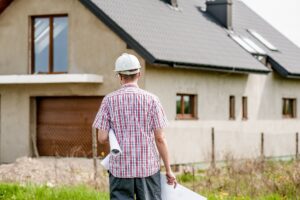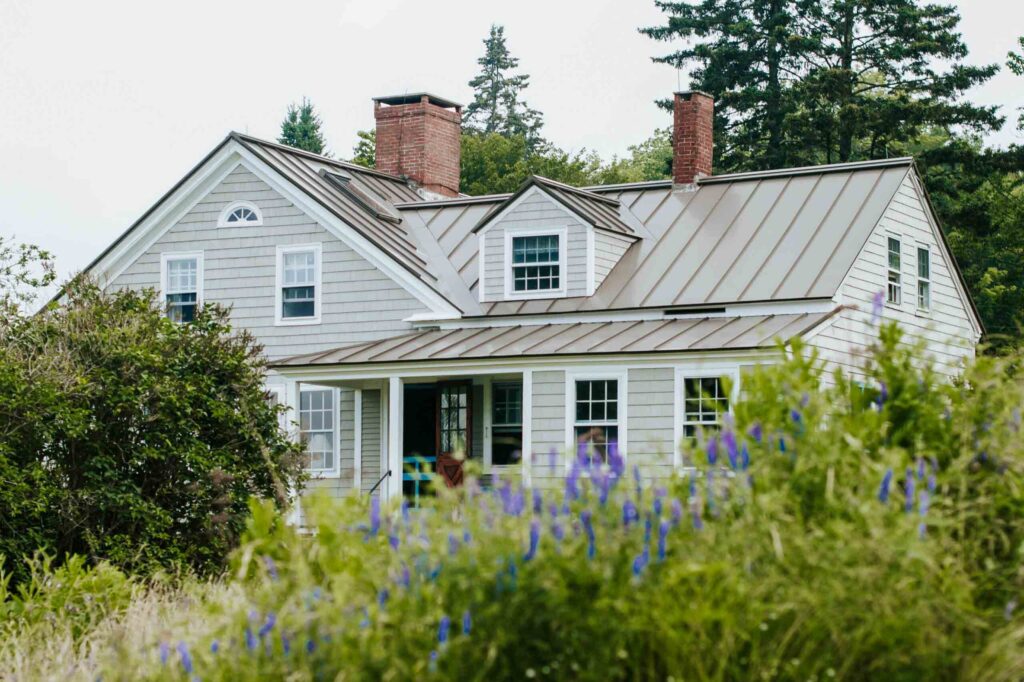15 House Flipping Tips from the Property Investing Experts
Follow These Tips to Successfully Fix and Flip a House
1. Build a Rehab Team of Trustworthy Professionals
Building a trustworthy team is essential to your success. A knowledgeable real estate agent helps you not only find potential properties, but also wade through the legalities of purchasing properties and preparing for additional costs. Building a team of wholesalers is imperative to find off-market opportunities. Reputable contractors assess what repairs the property needs and repair the home. And of course, an expert hard money lender supplies the funds you need in addition to expert advice and suggestions on your strategy.
2. Partner with a Reputable Hard Money Lender
By partnering with a hard money lender, you’ll bypass the endless red tape and strict requirements set by banks during the traditional loan approval process. Instead, the pre-approval process for a fix and flip loan is quick and easy. You can close more quickly and present stronger offers, which is essential for acquiring discounted opportunities. A reputable hard money lender will also help you choose the right property with the most financial opportunity. When partnering with a hard money lender like Catalyst Funding, you’ll feel confident with an experienced team assisting you throughout the process, advising you on the best fix-and-flip strategy, and helping you develop a comprehensive plan to help you meet your goals.
3. Research Markets and Trends
To know where to flip and where not to flip, you must research the markets. What type of houses are selling in that area? What is the average profile of the buyers moving to that area? Is the market still growing, or has interest been dying down? What is the expected appearance of the homes selling fast? The more data you compile about the local real estate market, the more informed your decision will be when choosing your flip.
4. Determine your Target Buyer and their Expectations
It’s crucial to understand who’s buying in your market. Are you renovating a home for a family in a modest, suburban neighborhood? Then you certainly wouldn’t approach the project like a large property in a high-end community. Be sure that you don’t over-improve the house if it isn’t necessary. Driving the cost significantly above what people in the market are willing to pay means your house isn’t going to sell quickly – or maybe not at all. Rather, look at comparable houses in the area that are selling fast, figure out what they have in common, and use them as examples to match your renovations to the buyer’s wants and needs.
5. Always Inspect the Property Before Purchasing
Just like researching a market, the property in question should be closely inspected as well. Make quick, but well-thought-out decisions because your success depends on it. Choose a contractor you trust to walk through property with you or focus on educating yourself of rehabs before you make your first offer. Going forward, it will be important to educate yourself on repair costs and identifying needed repairs. Good deals go fast and having long-term success requires knowing how to do this on your own. Knowing approximately how much money is necessary to renovate the house is imperative as you want to ensure your investment will return a healthy one.
6. When starting, focus on more Cosmetic Upgrades, Not Major Structural Improvements
At the beginning of your investment journey, focus on mostly cosmetic upgrades as opposed to major structural improvements. Fixing significant issues concerning the foundation of a house or making major additions can be more challenging on your first deal. Rather, look for properties that primarily need a design upgrade and easier structural/mechanical improvements, such as new HVAC systems, appliances, and/or roofs. Simply updating carpeting, paint, cabinets, and appliances are easier to manage at the beginning as opposed to replacing an entire electrical or plumbing system. While it may be exciting, taking on a project that is too large when getting started risks your return on investment.
7. Buy the Worst House in a Great Neighborhood
Search for the diamond in the rough that needs a little TLC to show its true potential. When you choose the worst house in a great neighborhood, there’s huge upside potential! Of course, the house should be “the worst” only when assessing the design and cosmetics. It’s likely to be very visually unappealing; however, the property still must have a structural integrity, unless you are more experienced or are buying at a very low price. Once the house is modernized and speaks to buyers in the market, it will sell quickly when priced appropriately.
8. Avoid Projects with Big Rehabs and Low Projected Profits
When flipping a house, time is money. The goal should be to efficiently repair a property before quickly selling it unless it is a project with greater profit potential. If the property takes too long to renovate and it doesn’t sell rapidly, profits will be impacted by holding costs.
9. Estimate the Cost of Your Flip
Before making an offer on a property, you also must estimate the total costs to flip the house. This includes any expenses such as real estate commissions, repairs, improvements, closing costs, property taxes, utility costs, insurance, and interest on loans. It’s vital to understand the numbers.
10. Prepare for Unexpected Costs
It is important to anticipate some unexpected expenses. It is rare that there are no additional repairs needed over and above your original plan, especially on larger rehabs or for homes which are more distressed. A 5-10% contingency, depending on the size of the job, condition, and age of the home, is usually adequate if the home has been properly evaluated upfront.
11. Plan for the Best Exit Strategy, but be prepared for other Exit Strategies
It is essential to clearly plan for the best exit strategy and plan your rehab and financing around that option. That said, planning multiple exit strategies is pivotal when investing in a house flipping project. The real estate market can soften, or other economic factors can come into play. There are multiple situations which could cause your original exit strategy to no longer be an option. It is always a good idea to get financing approved and terms clarified to hold the property as well.
12. Don’t Overprice the House
When putting the house on the market, don’t get too ambitious. The bottom line is the market and what buyers will pay, no matter your situation or the feeling you spent more on the rehab than anticipated. If the price is too inflated compared to its actual value, the house will sit on the market, and you’ll lose money. The best offers usually happen in the first few weeks and multiple offer situations create energy and improve your negotiating position. Make sure to list it accurately. In doing so, you’re more likely to get offers in just a few weeks. Homes that are on the market for long periods become stale, difficult to sell and buyers gain the negotiating power. Another pro tip is to price at even numbers, such as $400,000 or $500,000. When agents pull listings to view with potential homebuyers, they usually search even numbered groups. This will cause more potential buyers to see your property.
13. Stay on Track with a CRM or other organizational system
Are you working through your first fix and flip project or juggling seven at the same time? No matter how many renovations you have in progress, it’s critical to stay on track and organized. A CRM or alternative organizational system can help. Monitor each of your deals and its progress from the beginning stages to project completion, ensuring goals are met on time.
14. Network to Establish Connections
Whether you’re new to house flipping or a seasoned pro, you’ll appreciate the priceless benefits of networking. Attend local real estate investing events to meet other fix and flippers, hard money lenders, real estate agents, and even contractors. You’ll establish connections that will come in handy when facing an unanticipated issue. Get second opinions, advice, and insights you may not have thought of yourself.
15. Always Continue Your Education
Continuing your education is a key component of becoming a successful investor. The real estate market is always changing, so you need to ensure you master the most relevant skills necessary to profit off your fix-and-flip investments and maximize your ROI (return on investment). Attend panels and training events. Sign up for online webinars. Watch YouTube videos on rehabbing homes, design advice and other topics. There’s an endless number of resources you can utilize to keep learning and building your knowledge base. Also, don’t forget to sign up for our market updates and follow us on social media.
Ready to Flip a House?
We’ve given you the top house flipping tips you need to be successful, so now it’s time to put them to use. Ready to flip a house? Then take the first step and fill out our pre-approval application now. Our loan officers are standing by and ready to help! We can have you pre-approved in 24 – 48 hours. We specialize in working with newer and the most experienced investors alike.

San Antonio Real Estate Market 2025
San Antonio’s real estate market in 2025 presents a strong investment opportunity, driven by steady population growth, affordability, and economic stability. With increasing demand for both rental properties and homes, investors have numerous profitable prospects to consider. Early reports from industry experts reveal a rise in home sales activity, even as prices temporarily decline, offering potential bargains for savvy buyers. This active market, combined with a favorable balance of supply and demand, suggests long-term growth potential. Stay updated with monthly insights on San Antonio’s evolving real estate market here!

Dallas Real Estate Market Trends 2025
Dallas’ real estate market in 2025 is shaping up to be a hotbed for investment, driven by rapid population growth, a thriving economy, and expanding job opportunities. Demand for both rentals and homes for sale is surging, offering attractive returns for investors. Industry experts are reporting increased activity in single-family home sales, with strong performance across various price ranges. This balanced, high-growth market positions Dallas as a prime spot for real estate investment. Keep up with monthly updates on the Dallas real estate market here!

Houston Real Estate Market 2025
Houston’s real estate market in 2025 presents a strong investment opportunity fueled by steady population growth, economic diversity, and competitive living costs. With rising demand for both rental properties and homes, investors have plenty of profitable prospects to explore. Early reports from industry experts show a surge in single-family home sales and vibrant activity across various price points. This healthy balance of supply and demand points to continued growth. Stay informed with monthly updates on Houston’s dynamic real estate market here!

Catalyst Funding: Areas We Serve as a Trusted Hard Money Lender
Looking for fast, reliable funding to invest in top Texas markets like Houston, Dallas, San Antonio, or Austin? Catalyst Funding is a trusted hard money lender serving real estate investors across Texas, including Houston, Dallas, San Antonio, and Austin. We offer fast, flexible hard money loans for property acquisitions, renovations, and long-term investments. Our expert team provides tailored financing solutions such as bridge loans, rental property loans, and cash-out refinances. With quick turn times, dedicated loan officers, and a secure borrower portal, Catalyst Funding helps investors close deals efficiently and grow their portfolios. Learn how we can support your real estate investment success today!

